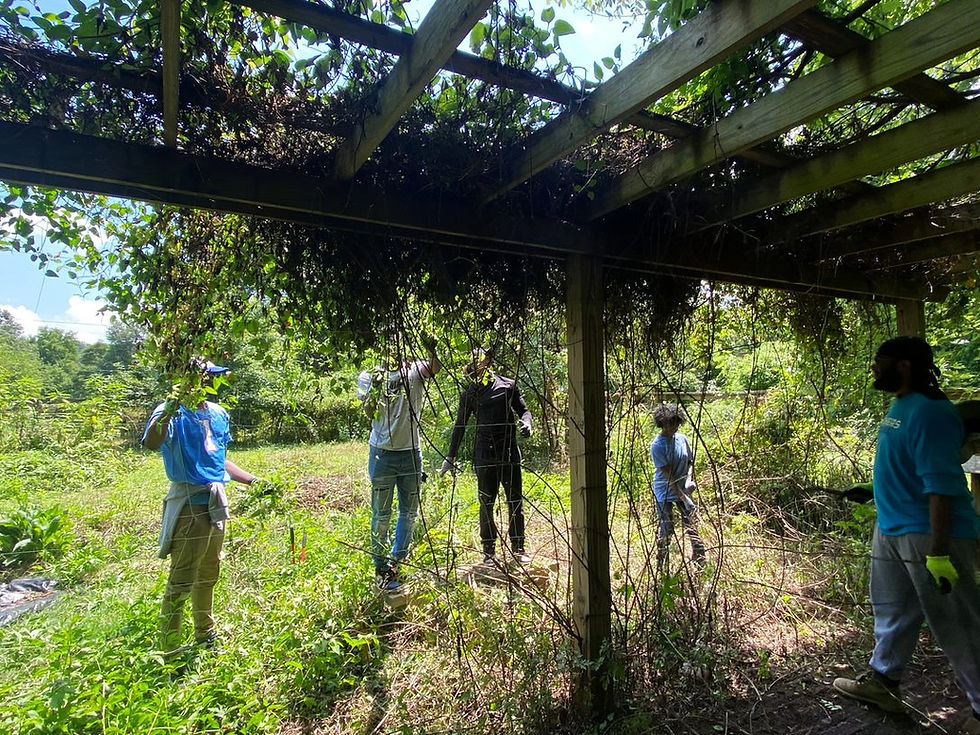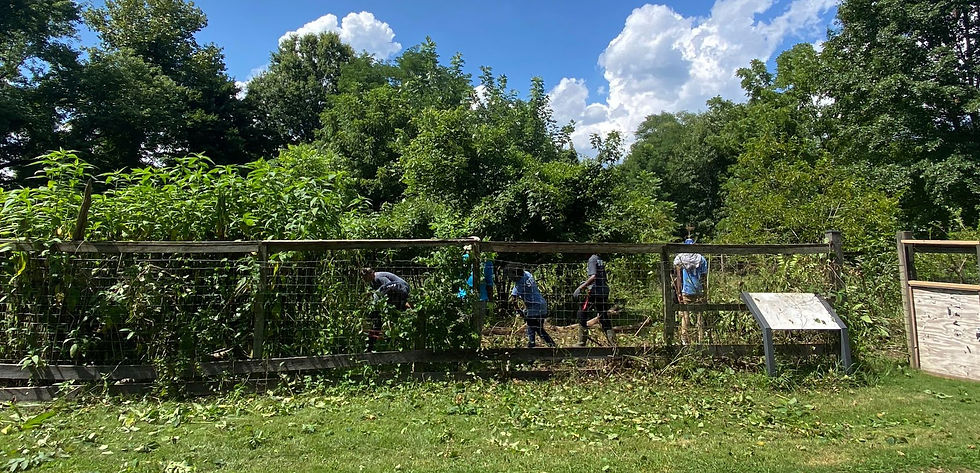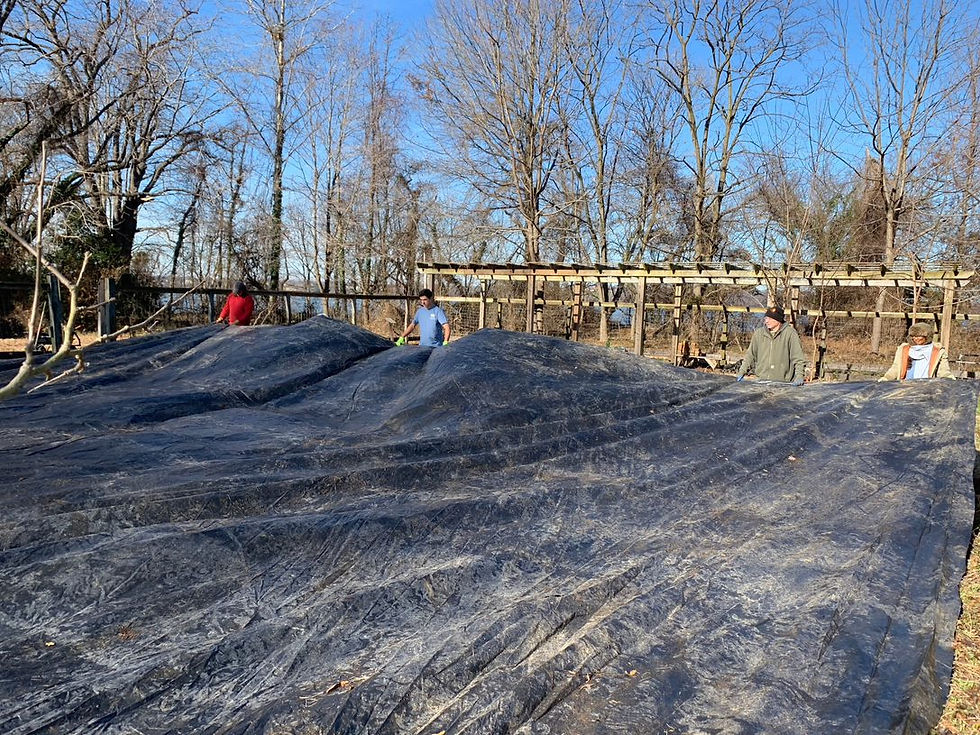Green Thumbs Garden Blog
- Accokeek Foundation

- Jan 9, 2023
- 2 min read
Great things are happening at the Accokeek Foundation! We are in the process of redesigning our Museum Garden where we plan to exhibit traditional stewardship practices that work to reconnect all life forms with the Land. We encourage the growth and diversity of culturally significant plants that will attract pollinators and provide food and habitat for wildlife throughout the year.

The transition of the Museum Garden initially began in the summer of 2022. Interns participating in Prince George’s County’s Summer Youth Enrichment Program (SYEP) helped staff identify and remove undesired plants from the garden and clear vines from the pergola. The crew identified both native and non-native plant species, and carefully eliminated the invasives. This helps prolong the life of the pergola and contributes to our ongoing efforts to remove invasive plants from the park.

In the fall, the Museum Garden team identified existing plant species and began the process of eliminating small non-native trees, including Norway Maple and Bradford Pear. We also removed invasive plants that include Sweet Autumn Clematis and Oriental Bittersweet, vines that were quickly taking over the garden fence and wrapping themselves around native trees. Special attention was paid to native species, including Elderberry and Passionflower, which will continue to have a home in this garden. We intentionally kept Black Walnut, Black Locust, and Mulberry trees in the garden to provide shade and food for valuable wildlife and pollinators.

Structural repair needs have been identified, and we plan to upgrade the pergola and garden entrance gates. Large tarps were placed in the garden in December, which will smother weeds and help prepare the soil for spring planting. Known as solarization, black plastic prevents sunlight from reaching weeds below, heats up the soil, and kills seeds of unwanted plants before they sprout. For this process to be effective, the plastic must remain in place for several months.
The Museum Garden will be a space where visitors can experience and immerse themselves in a diverse plant habitat. The garden will provide hands-on opportunities for students and youth, and volunteer opportunities will be available for those interested in contributing their time and skills to the garden! We look forward to creating a space for everyone to enjoy - check back often to view our progress!





